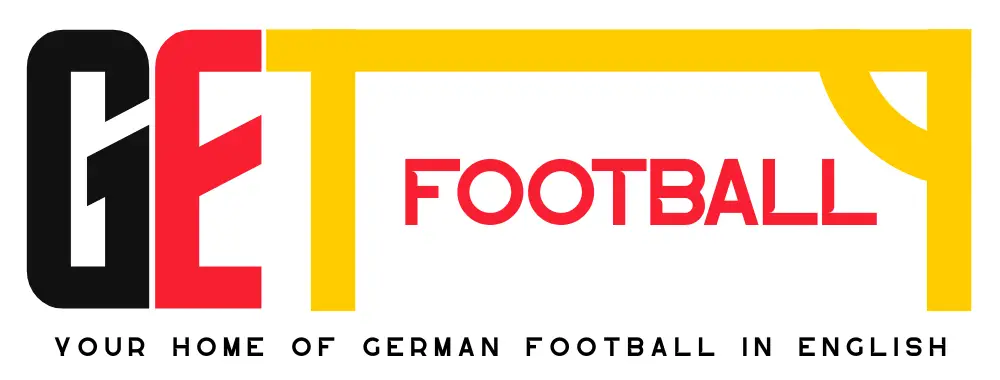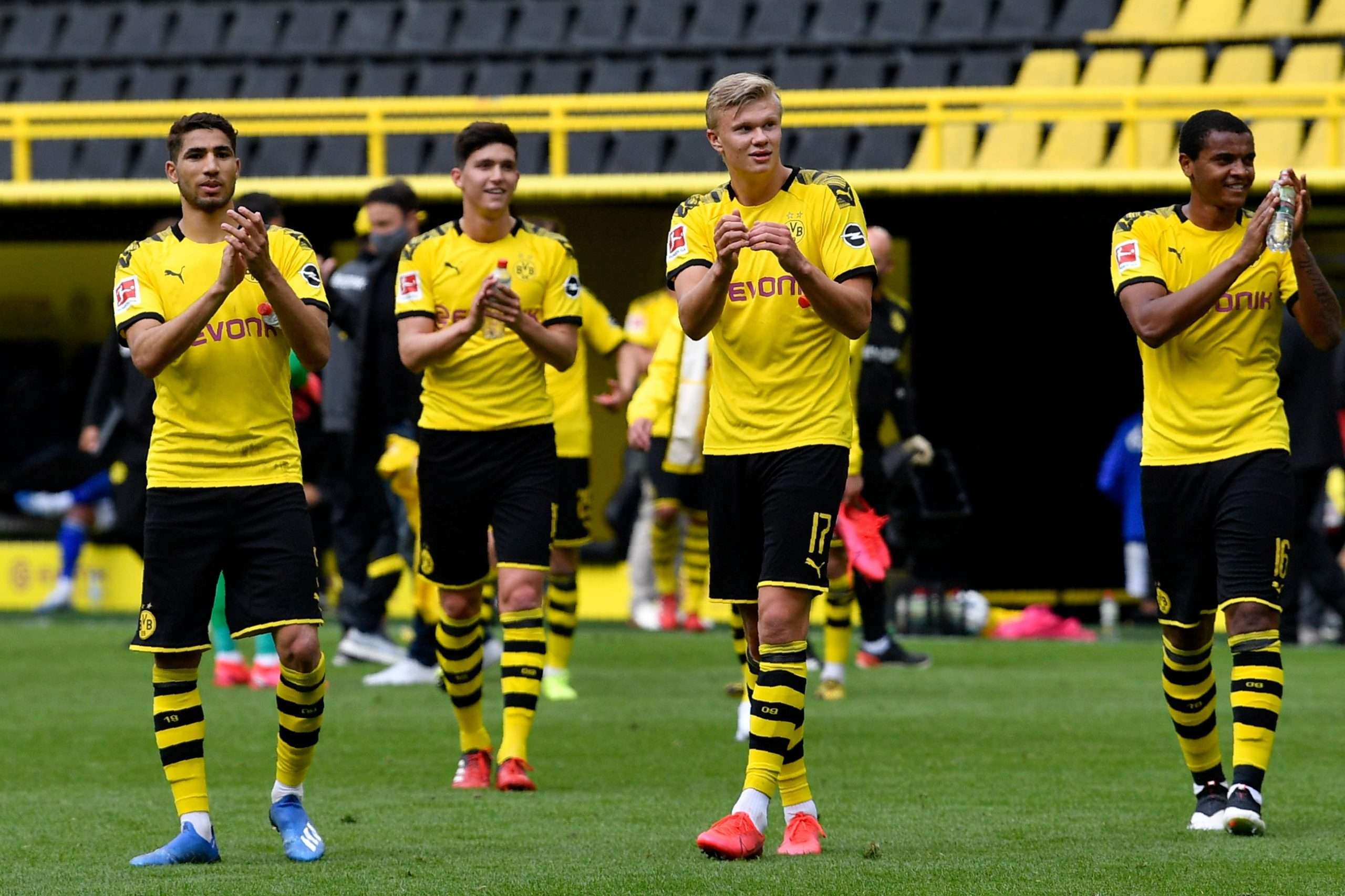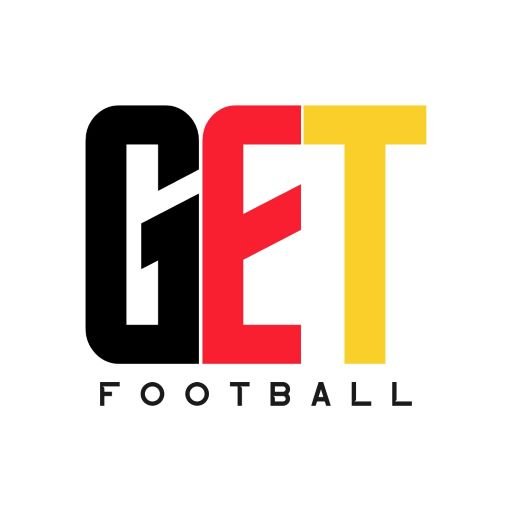German football finally returned from hiatus and offered up the 180th edition of the Revierderby between Borussia Dortmund and Schalke. A fantastic fixture throughout the years that now pits Lucien Favre against David Wagner with the world watching. Wagner and Schalke come into the match without a win in their last six Bundesliga away games and will hope to be able to return to form following the break.
During this analysis Get German Football News will explore the tactics of both managers in Dortmund’s diamond press and passing patterns and what went wrong for Schalke.
Lineups
Favre’s Black and Yellow would be without Marco Reus, Dan-Axel Zagadou and Axel Witsel entirely, and Jadon Sancho on the bench. What has become their usual 3-4-3 this season had Thomas Delaney and Mahoud Dahoud as the double pivot. Julian Brandt, Erling Braut Haaland and Thorgan Hazard made a threatening front three. Giovanni Reyna was set to make his first professional start but was injured during the warmups.
Schalke got a boost with the return of Amine Harit, every match he has been involved in a goal in the Royal Blues have won. Wagner set his team out to match Dortmund’s 3-4-3 variant. Jean-Clear Todibo making his sixth appearance for the club on his loan deal from Barcelona. Ozan Kabak was unavailable due to injury.
Dortmund diamond press
Before the pause, the Royal Blues had only scored once in five games. Coming into the match it’d be interesting to see if head coach David Wagner had maybe made any drastic changes in an attempt to start generating more goal scoring opportunities from his team. In possession their structure could be best described as a 3-2-5 with Jonjoe Kenny providing width on the right and Harit on the left. With the objective of creating an overload between Dortmund’s defensive and midfield line. Through Favre’s tactics however they would not get to play through their central forwards.
Schalke would circulate the ball between their back three before falling into Dortmund’s trap. They used a ball oriented press in a 5-4-1 that produced a diamond shape in which they used to dictate the centre-backs passing angles and options. Once the ball was received by a wide defender his other two options in the defensive line would be cut out. Furthermore this prevented central progression through central midfielder Weston Mckennie. Leaving him only with the option to pass out wide to the fullback.

When Schalke would enter the attacking third through the wide spaces, they would be met with a roadblock. Being left at a numerical disadvantage of a 4v3, Dortmund would prevent passes into the central zones and in-behind their defensive block. Forcing their opposition to pass backwards and attempt to change the point of attack. Sometimes using the touchline as an extra defender and forcing a turnover. Schalke would end the game with a disappointing xG of 0.4 and an underwhelming performance in the attacking third.

Dortmund triangle patterns
The home side were just as impressive in possession as they were out. They were sharp and incisive, from Manuel Akanji at centre-back to the tip of the attack with Haaland. This would be particularly on show when playing through Schalke’s defensive shape in tight spaces. BVB completed 85% of their passes.
Throughout the thirds of play they were prominent in playing in triangle passing patterns. Dortmund under Favre can be accused at times of playing with meaningless possession. Here though, at least one, sometimes two members of each triangle sequence would be positioned past a line of pressure.
When playing out the back in their defensive third, you can see two players position themselves to receive a pass behind the first line of pressure. Creating a 3v1 against the nearest pressing player. Allowing for at least one clear passing option to Hakimi and offering Hakimi’s next pass to Hummels. Making for a fluid passing sequence where a player does not have to stop and think.

Their double pivot was the base of this as during buildup in the middle third they offer two vertical passing options of the first two set triangles to bypass the first line of pressure. Once moved onto one of the central midfielders, they could look to the near side fullback and attacking midfielder who would be positioned behind the next line of pressure.
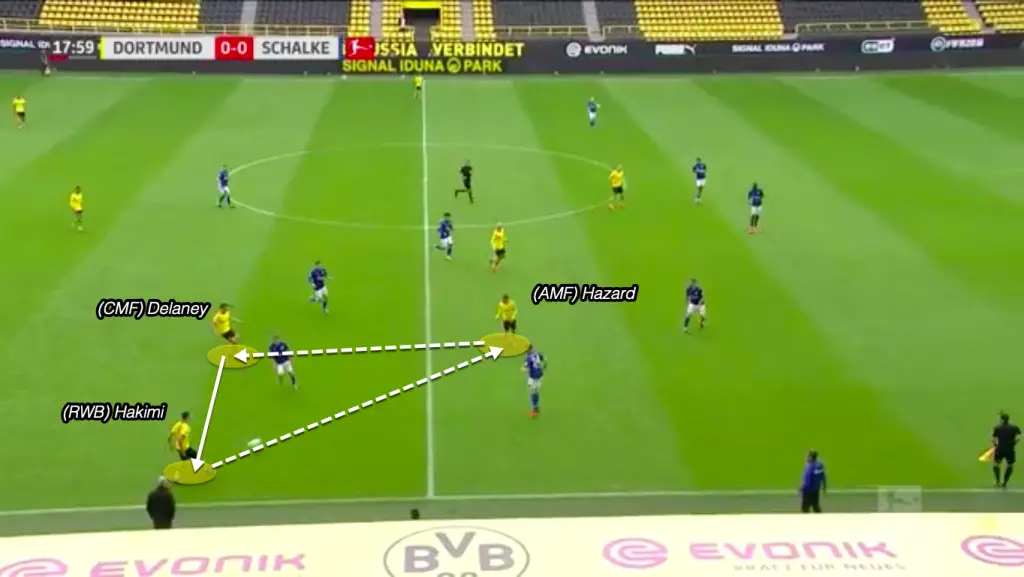
Finally this even extended into the attacking third. In this action the forwards looked in prime shape, producing a penalty box entry in three touches. Guerreiro finds Hazard ready to receive the ball with his back to goal in the left half-space. Hazard’s positioning pulls a Schalke defender out of position and Haaland makes a movement into it and the Belgian makes a cheeky touch to send the Norwegian into the penalty box.
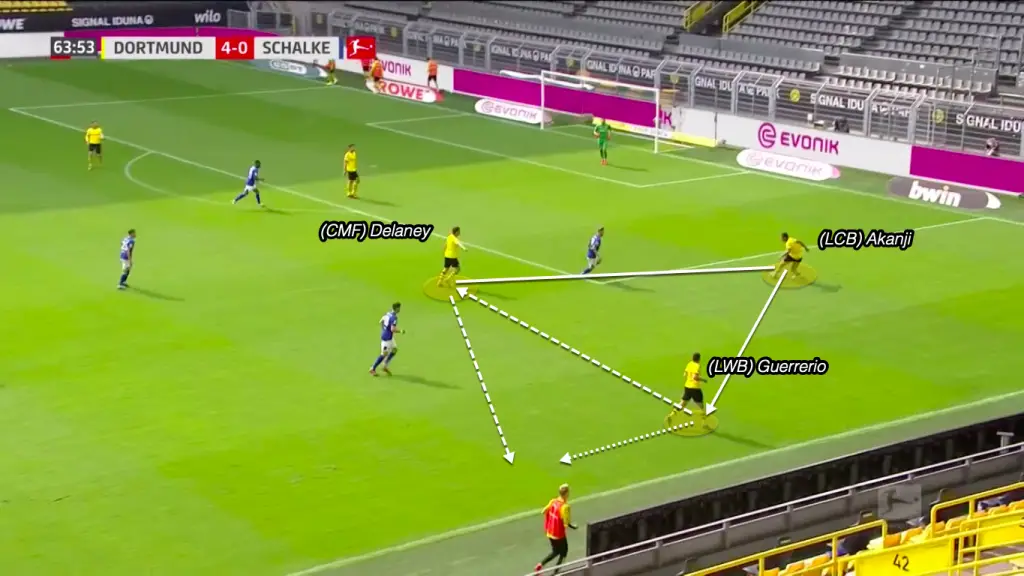
Schalke’s press struggles
Pressing requires a great team understanding, especially against a top quality opposition such as Borussia Dortmund. Wagner’s side would be played through too easily as their disjointed press would fall apart in the middle third with players from the 2nd line of pressure being baited into being pulled out of position as Dortmund circulated the ball between their centre-backs. Allowing for their talented attacking midfielders to receive passes in dangerous positions.
Julian Brandt with his world class movement between the lines thrived on the gifted space, being given the license to roam from flank to flank. It would be on full show in their opening goal. Hakimi drags Oczipka out of position, Brandt who checks his shoulder and recognises the newly vacated space moves into it. Now occupying the left half-space he receives a pass breaking the first and second line of pressure eliminating seven players from the game, Hazard makes an overlapping run and Brandt makes a spectacular back-heel pass to him to make a pre-assist.
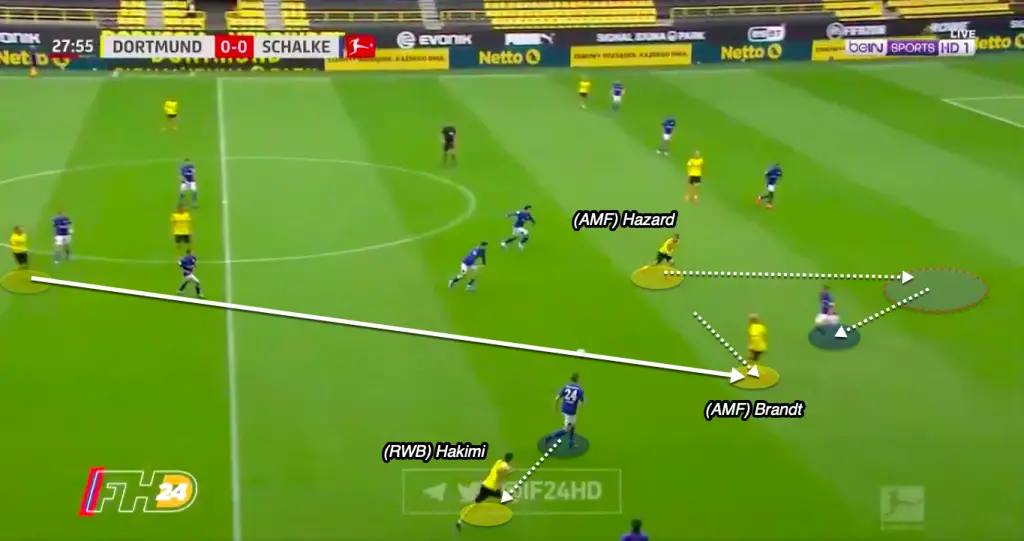
Utilising the underloaded side
A common theme of BVB’s play under former boss Thomas Tuchel was overloading one side to exploit space on the other. The advantages that come with this ideology is manipulating the positioning of the opposition defensive structure to have space to attack into. This would become especially prevalent in this game during the second half as Schalke found themselves down by multiple goals. They would begin crowding the ball near-side as they desperately attempted to mount a comeback but it would create more space than it prevented.
In some cases, Schalke players would shift quick enough to prevent a penalty area entry but they would not matter here. As you can see here every blue shirt on the pitch has been sucked into defending their left sided zones which allowed Guerreiro to be picked out by Brandt and receive the ball with acres of space to attack. The next two passes would result in a fourth goal as the Portuguese played a 1-2 with Haaland at the top of the box.
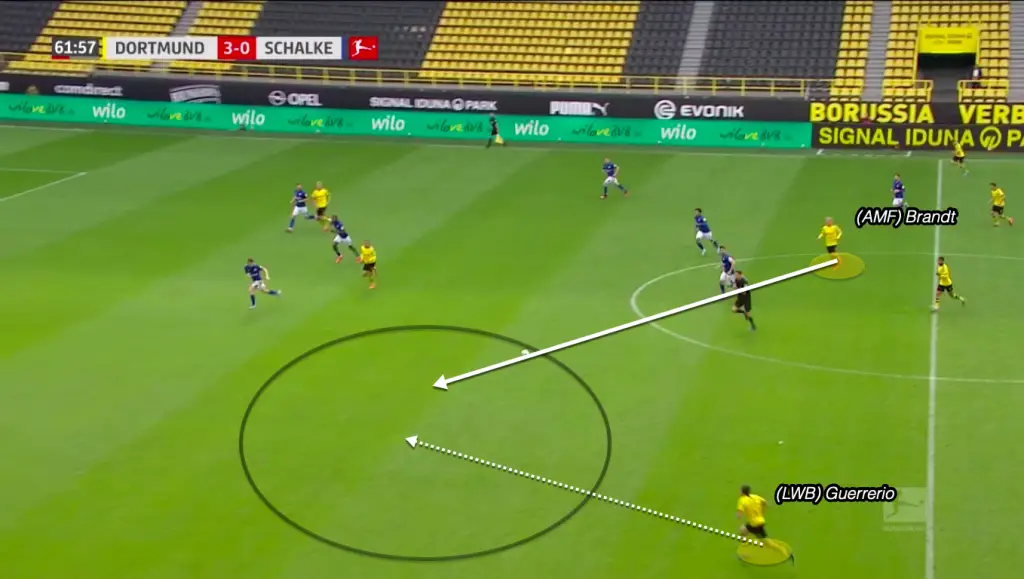
Conclusion
Known as the “mother of all derbies” would end as the “mother of all beatdowns” as Dortmund flattened their local rivals 4-0. The 0.4 xG metric sums up Schalke’s play in the attacking third on the day. They could not create solutions through numerical disadvantages and the idea to create an overload with their attacking line did not pay off as it resulted in less players showing to the ball and assisting ball progression.
The home side looked sharp and fit individually, playing through phases of play with flair and conviction. Favre’s tactics shone through in a big way in and out of possession and in every phase stifling David Wagner’s side completely.
By Craig Moniz.
